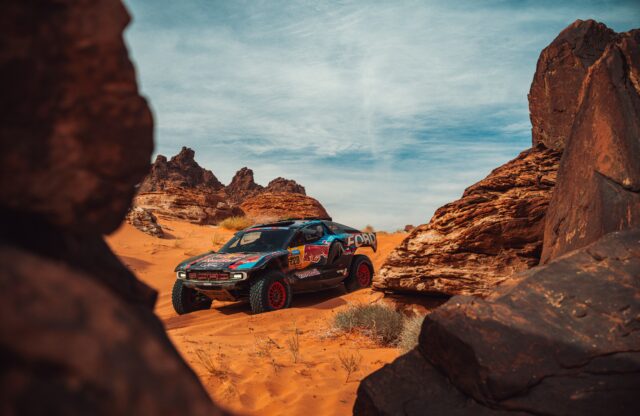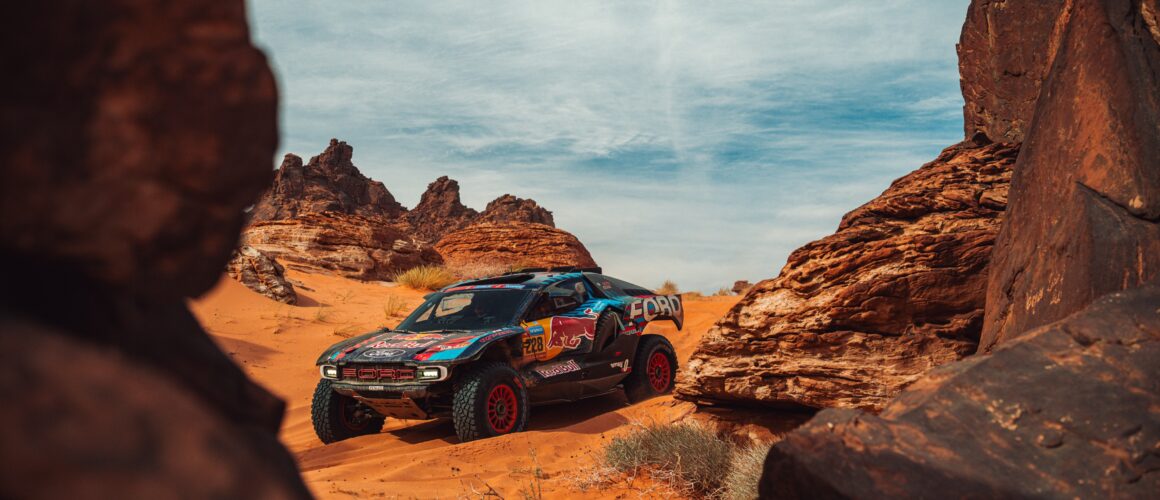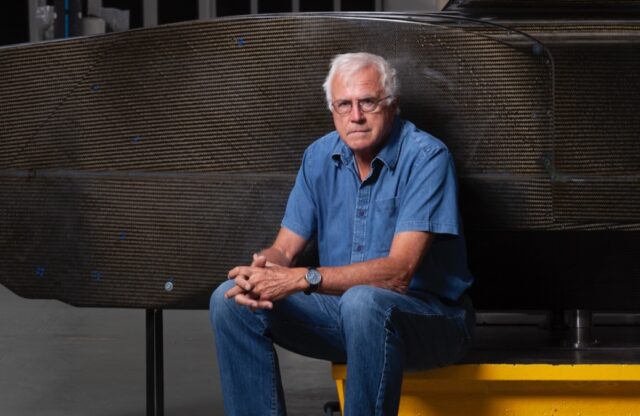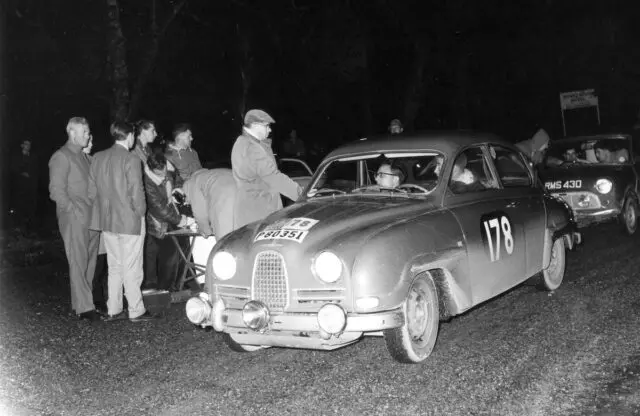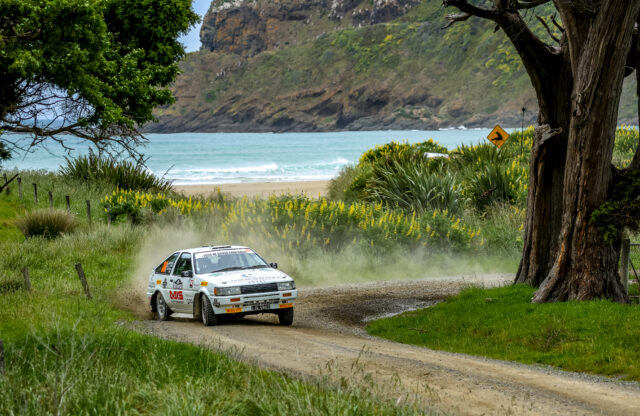The Dakar Rally is the stuff of legend. Tales of endurance, heroism, danger, recklessness and adventure are the norm. However, it’s the sort of event that many know of, but most know little about. “It’s rally cars in the desert, isn’t it?” Well… yes, but also no.
It’s a heady mix of concentration, planning, quick wits and hours of non-stop work. While drivers tear their way around the rally’s mammoth stages, their teams are haring from point to point to make sure their charges are in perfect shape as quickly as possible for the next day’s punishment. It’s also a never-ending battle against getting sand in your ears.
2025 sees Ford Performance team up with long-time collaborator M-Sport to campaign the top flight T1+ class with the Raptor. The firm’s Raptor brand is a popular one – the Raptors are designed to go off-road, at speed, up, down, around and through anything without any fuss. F150, Ranger and Bronco Raptors have found fans all over the world thanks to their capability (and massive power), but the T1+ Raptor isn’t the kind of car you can pick up from your nearest dealer…
John Sprackling, chief engineer at M Sport, explains: “It doesn’t really share anything, other than the badge on the nose, with a road car. The T1+ class is the top level of four-wheel drive [in the Dakar Rally].”
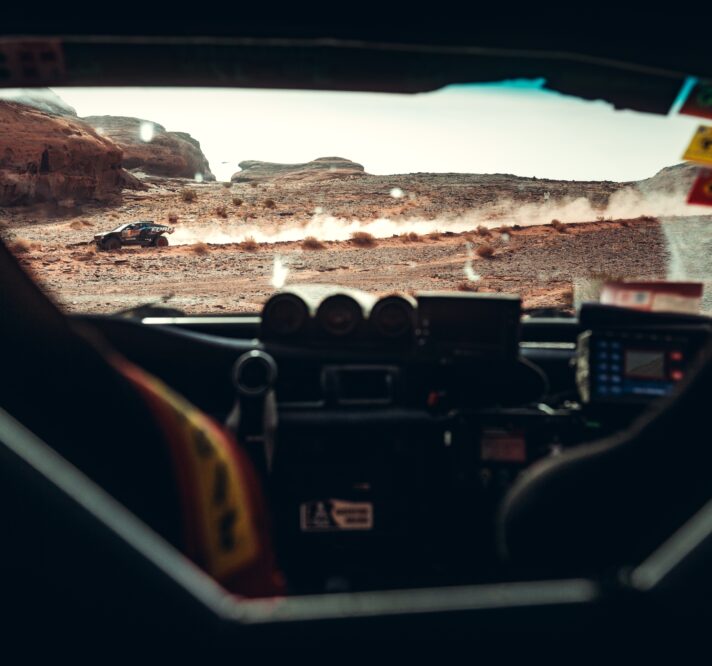
Tales of endurance, heroism, danger, recklessness and adventure are the norm
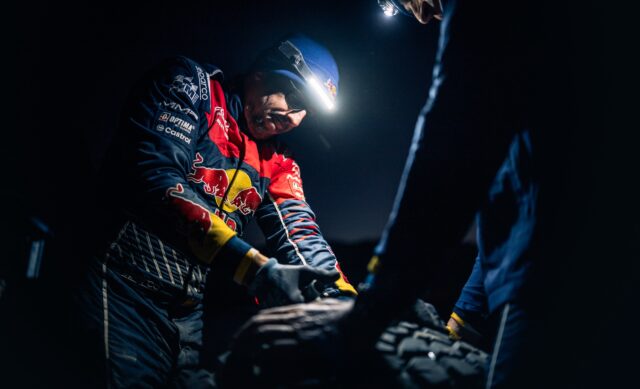
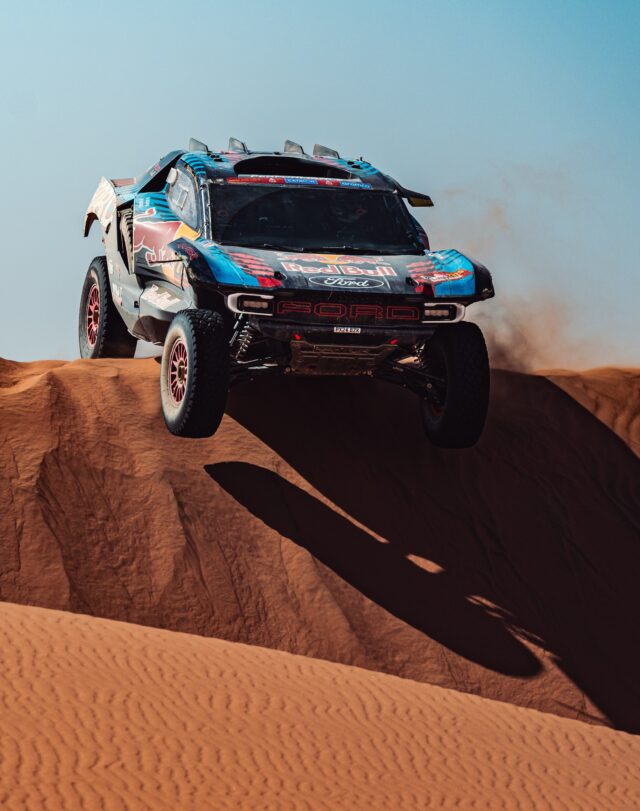
While it’s physically large, there’s little room to stretch out in there. Instead, every inch of the car is taken up with engine, spare parts, things to get you unstuck and things to make sure you can get to where you’re going. Its sonorous 5.0-litre Coyote V8 (well, V8 based on Ford’s legendary Coyote engine) takes up a fair bit of space, as does all the tech needed to keep it cool. You think a Land Rover is a big car with naff all room inside? Wait until you see a top-flight Rally Raid car.
Before the halfway point in the event, Ford team star driver Carlos Sainz Jr had been taken out of the race thanks to a bent rollcage deemed unfixable by the FIA (a similar fate befell Dacia’s Sébastien Loeb), and multiple Dakar winner (on two and four wheels) Nani Roma had suffered a malady that took his car out of contention for a win, but it meant he could act in a support role for the two surviving drivers, Mitch Guthrie Jr and Mattias Ekström.
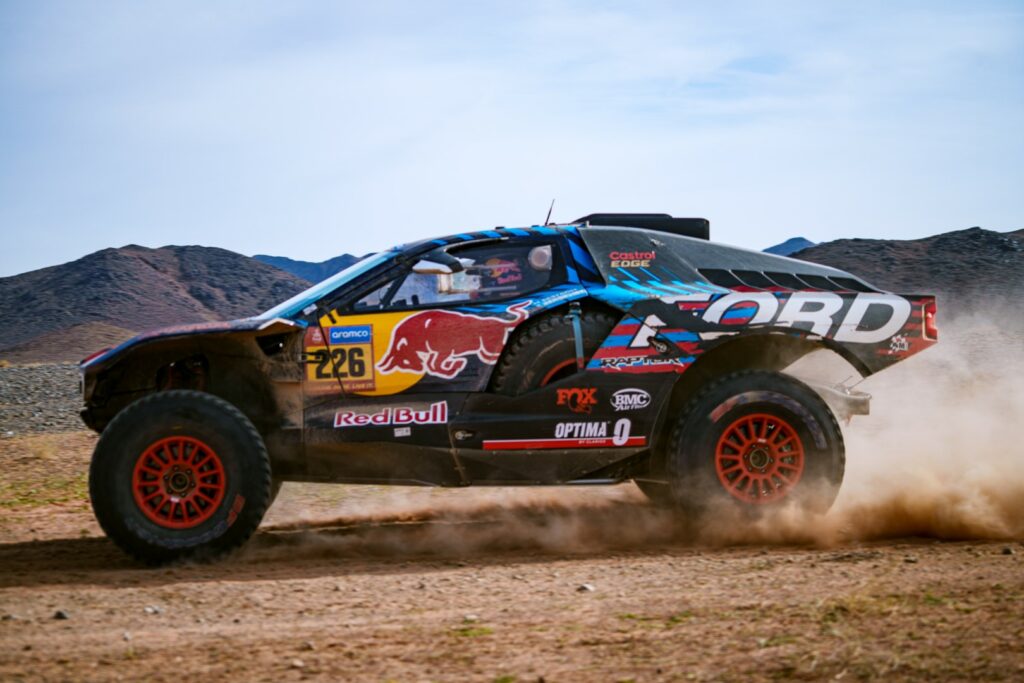
“We had an engine issue,” explains Roma – although ‘issue’ might be underplaying it slightly: “I don’t know exactly what happened, I only know that the engine stopped in the middle of the dunes.” Car immobile, the recovery truck took five hours to reach him – and then, he says, an hour being dragged, car full of dust, only the lights from the recovery truck visible, with no control, before they got to something resembling a road.
The time it took, and the time penalty added to Roma’s car thanks to a sadly necessary engine change meant standing on the big steps was out of the question, but at least his car could be loaded up with relevant spares and act at a very sandy breakdown recovery man should the worst happen to his teammates.
At the head of the pack, Ekström and Guthrie Jr seemed remarkably cool about the event. With such harsh terrain, and so much of it to cover, keeping calm under pressure might seem like an impossible task for you or I, but for Ekström it’s a matter of taking it step by step: “My way is to see stages every 50km – one lap is 50km… And every lap we have to check fuel consumption, we [Ekström and co-driver Emil Bergkvist] have a little chat, you know. And then you do 50 and 50 and 50.”
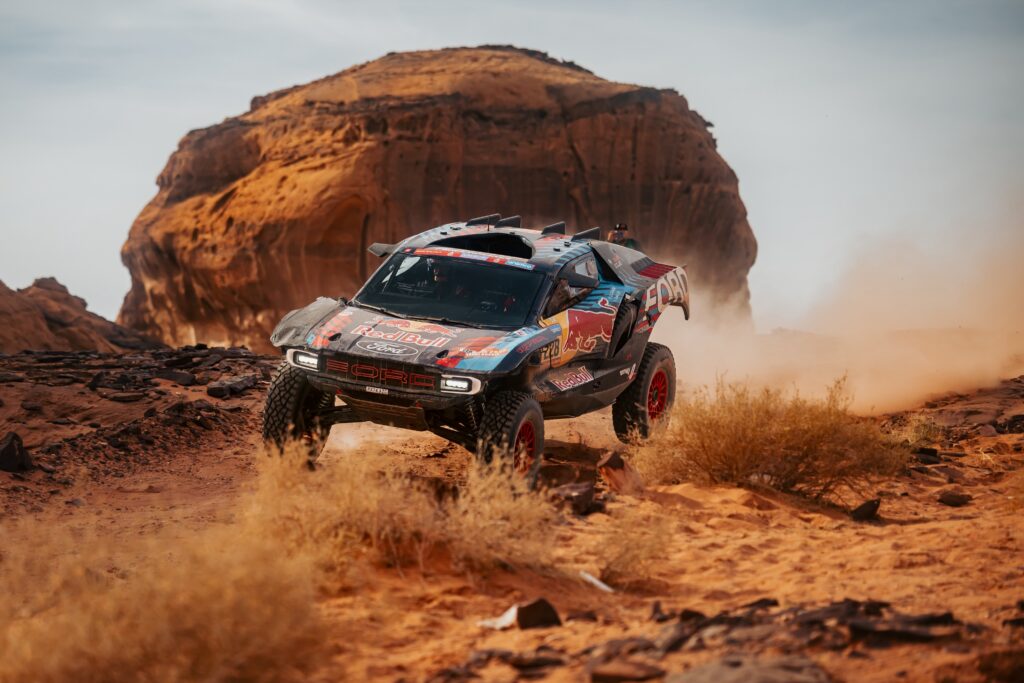
Guthrie Jr has campaigned the Dakar Rally before, but 2025 is his first year in the top class. The effortlessly charming young driver doesn’t parse out the rally in quite the same way: he keeps calm: “I don’t even know. I think sometimes it’s just adrenaline… We always say us drivers and riders are running on adrenaline, little – not too much – sleep and such long days. There are some days where you’re driving and I’m looking over at the road book, wondering how many kilometres are left, and you just want to get that stage over with.
“It depends on the stages, too. Some are easier. Some are tougher. Most of them are all really long and tough anyway. But yeah, it’s just everyday kind of trying to stay consistent, get to the end and keep yourself in a good spot.”
A Rally Raid car is a feat of engineering, and Ford’s relationship with the UK’s M-Sport has resulted in an incredible machine – one that came together in an alarmingly short amount of time. Matthew Wilson, M-Sport team principal, explains: “Design started, probably two years ago. We first turned a wheel in April 2024, and since then we’ve done around 18,000km of testing. The last year has been very full-on.”
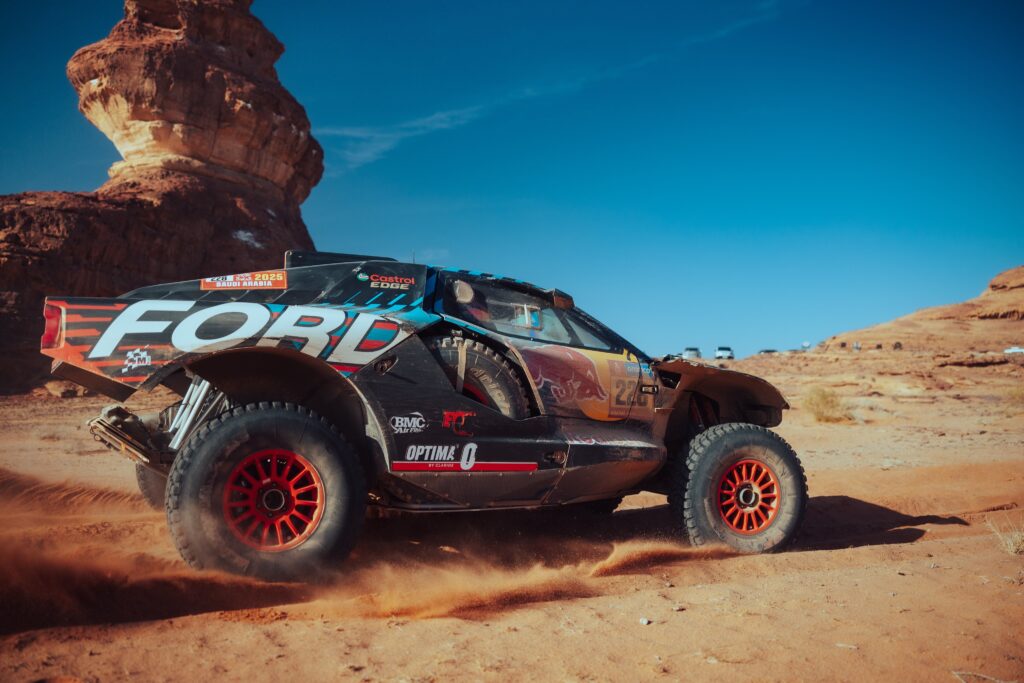
The year may well have been full-on, but it could be incredibly useful for the real world – the Dakar Rally is a learning exercise that can aid road-car development. Mike Norton, off-road programme manager for Ford Performance, outlines: “They are very, very unique vehicles. You know they are, they are built specifically for this job, but there are technologies and learnings that we will have that will end up on your road truck.”
Why is racing, especially here, so valuable? “All of our production vehicles do a huge amount of testing in all sorts of environments. You can test as much as you like. It’s not the same as going racing. For a start, you have a different level of drive. You’ve got the best in the world driving the best vehicles in the world at a pace that a production vehicle wouldn’t be capable of. From there, technologies and ideas come out of the woodwork, and you start to think about how it can translate to a road car.”
Perhaps it might be a bit far-fetched to expect a part made for the Dakar Raptors to make it onto your next Bronco or Ranger, but the seed of an idea can be planted in the desert.
When you get to Ford’s base in the bivouac – the travelling city that acts as work, rest and play (sort of) space for some 3000 people – what strikes you is how many people there are working on every inch of the car. When it arrives after a stage, work begins.
Matthew Wilson’s view of the chaos is something else: “Where we aimed to get to last night [the night before the ‘rest day’] was to strip the cars of all the parts that were being changed. And then this morning is about putting everything back on, basically.”
Everyone there is an expert in their field, each feeding back, communicating and working to ensure the cars are in top shape.
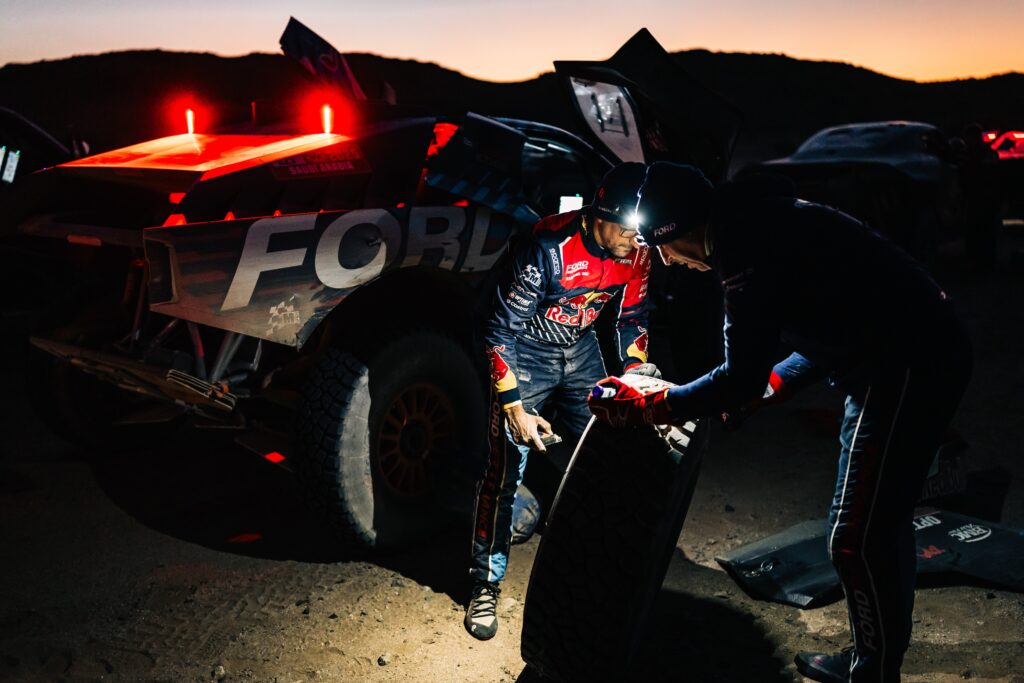
Each car started with five mechanics, but with Sainz Jr’s car out, his crew was spread throughout the remaining three. Do they ever stop working? When is enough… enough? “They call me the bedtime police,” laughs Wilson, “You’ve got to look after the team. For example, tomorrow we’ve got 550km to move. If we’ve got a late night tonight, I’ll make sure there’s somebody in every vehicle who goes to bed early, and that they will then drive first. Little things such as that make a big difference. We didn’t want anyone in tents on the ground [having seen the effects of torrential rain in years gone by], so we have roof tents.”
In some of the most adverse conditions in the world, on the most challenging terrain, the team reacts to every challenge with gusto, acting as a family unit to overcome odds stacked against them. The Dakar Rally is more than simply rally cars on sand. It’s a feat of mechanical endurance, and a test of driver skill, but it’s also humbling to see how much work, by so many people, goes into making sure both car and driver can do what they do best. The Dakar is one of the most incredible events on earth – not for its setting, but for its people.
The cars are pretty cool, though.
